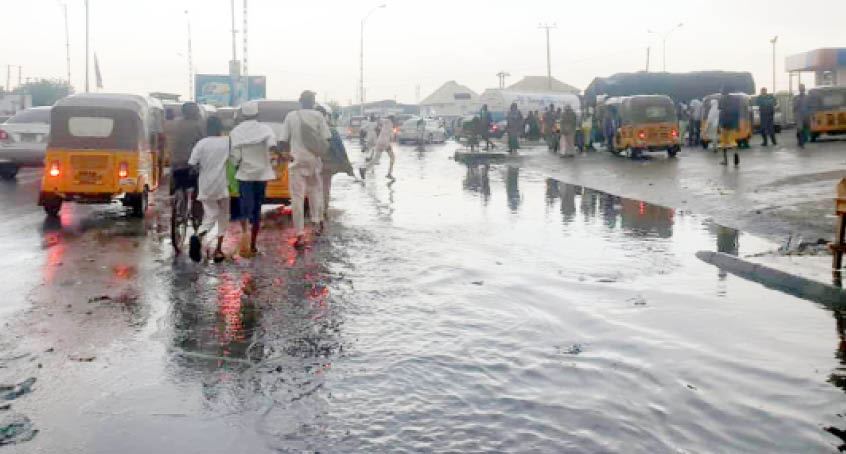It is yet another raining season when flood ravages many communities especially in the rural areas.
A flood is an overflow of water that submerges land that is usually dry and it is the most common and widespread natural severe weather condition.
- 10 things about Disu, Deputy Police Commissioner who won at U.S Judo competition
- Privatise public hospitals for optimal performance, NMA tells FG
In 2015, flooding caused severe destruction in Jama’are Local Government Area of Bauchi State. Torrential rain, which lasted over 20 hours, destroyed no fewer than 1,567 farmlands and submerged farmlands in seven villages in the area.
In Cross Rivers, flood destroyed 4,370 houses and displaced over 51,000 people in 212 communities in 2021.
Recently in Lagos, about seven persons, including siblings, were killed and vehicles submerged as a result of flooding caused by a two-day rainfall.
Even though there is an increasing link between flood incidences and climate change, unlike other natural disasters, it can be controlled with proper planning and provision of necessary infrastructure.
More worryingly, the Nigerian Meteorological Agency (NiMet) last week advised Nigerians in some parts of the country to prepare for impending flood as a result of expected rainfall.
Below are six ways you can prepare for flood:
Install water sensors or flood detection systems
There are many options for water detection systems, sensors, and alarms to alert you to water or leaks within your home or business.
According to trtexas.com, more complex water or leak detection systems can be tied into your smart phone or your home security system to alert you of water before it turns into a disaster.
Regular clearing of drainage channels
Avoid piling leaves, mulch, or other debris in your yard where it could flush into the sewage drains and block them. If you live in an area with lots of trees, regularly rake your yard, bag the leaves, and dispose them appropriately for pick up.
Check nearby drains to make sure they are clear and use a rake to remove any visible blockage. Alert the relevant authorities where necessary.
Improve grading and drainage around your home
When it rains, take note of any rain or flood water that accumulates near your home. Pay attention to areas near the foundation. The ground should slope away from the foundation of your home or business. You may need to bring in dirt and sod to improve the grading. In some cases, you may need to install drainage where water accumulates to give the water a place to go during heavy storms.
Check for openings, cracks
As part of your yearly home maintenance, seal openings, such as doors, windows, utility, and exhaust penetrations. Regularly inspect your foundation and seal foundation cracks with masonry or mortar caulk. Also, check and seal your basement windows.
Improve the water resistance of the basement or low windows by making sure they are properly sealed and caulked. If you have old windows, you may also consider having new ones installed. Newer windows have a better seal which can reduce the chance of water entering your home. New windows can also help with energy efficiency.
Keep sandbags nearby
If flood levels are rising and water is approaching your home, sandbags can prevent water from coming through doorways or low windows. If you are in an area where flood risk is high, keep sandbags handy for emergencies.
Plant Vegetation
While trees, shrubs and even different varieties of grass can be decorative and scenic, they serve an even greater purpose when it comes to flood prevention. Extra vegetation can absorb excess water into the soil and can prevent land erosion by slowing down heavy water flow.

 Join Daily Trust WhatsApp Community For Quick Access To News and Happenings Around You.
Join Daily Trust WhatsApp Community For Quick Access To News and Happenings Around You.


